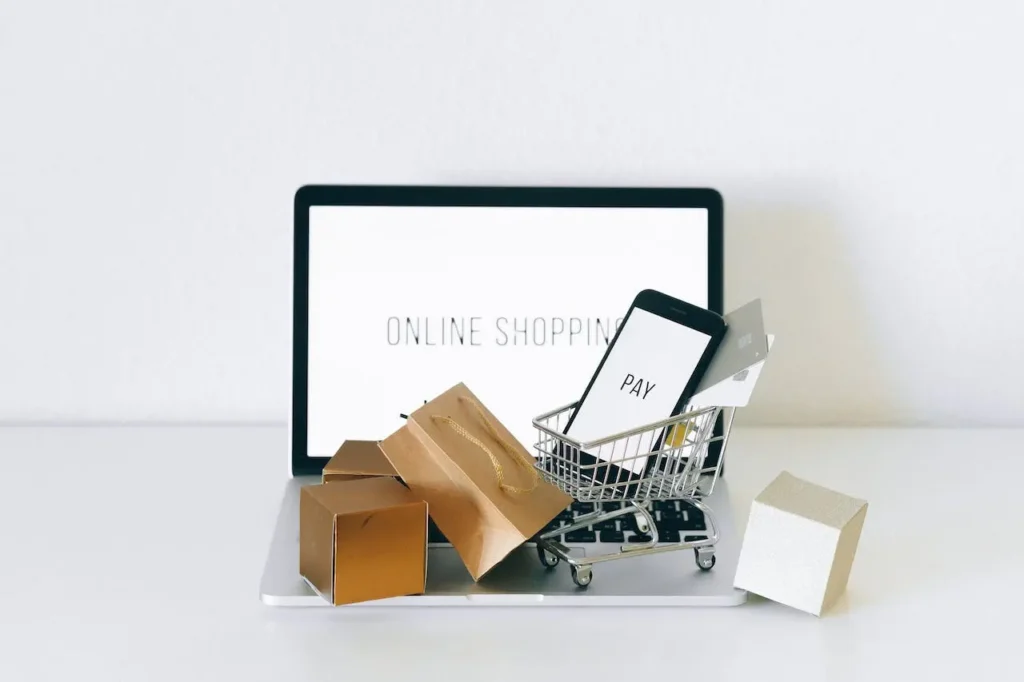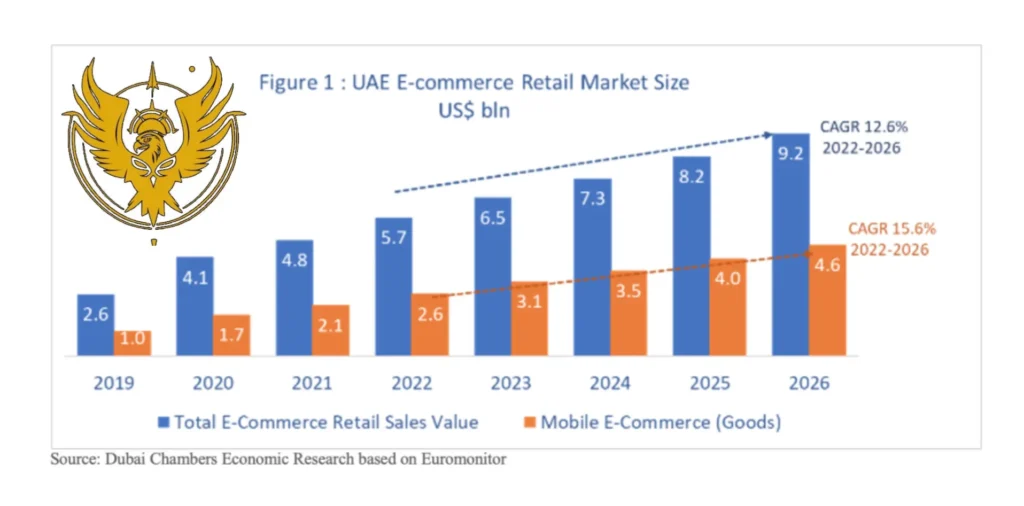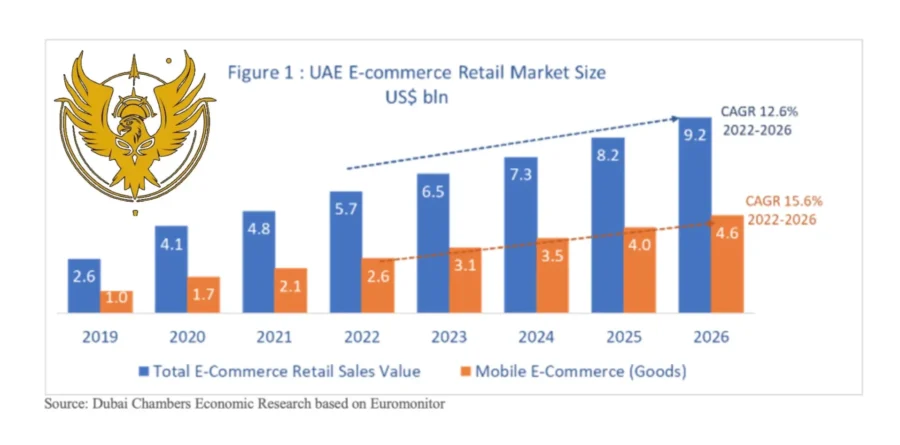Ecommerce , also known as electronic commerce, simply involves buying and selling stuff on the internet. It covers everything you do online when you shop or sell things
from browsing on your phone to paying securely over the web. It’s a big world of online shopping, tools, and systems that make buying and selling easy and safe

Table of Contents
What is Ecommerce?
Ecommerce, a shortened form of electronic commerce, has fundamentally altered the landscape of trade and consumerism by enabling the buying and selling of goods or services through digital platforms, primarily the internet.
The genesis of this concept can be attributed to Michael Aldrich, who conceptualized and pioneered the idea in 1979. His vision centered on the utilization of emerging technologies to facilitate electronic transactions, envisioning a future where commerce business transcended physical constraints and flourished in the virtual realm.
With the inception of this innovative approach, the traditional notion of commerce underwent a profound evolution
reshaping the dynamics of how businesses conducted transactions and how consumers accessed products and services.
This paradigm shift revolutionized the shopping experience, breaking geographical barriers and empowering individuals and enterprises to engage in seamless, borderless transactions. Aldrich’s groundbreaking vision laid the foundation for what would become an integral part of contemporary society,
heralding the dawn of a new era where the internet emerged as a powerful marketplace connecting sellers and buyers worldwide.
In 2022, eMarketer predicts that worldwide online retail sales will hit over $5 trillion, marking a significant milestone. This amount constitutes more than 20% of total retail sales. Looking ahead to 2025, spending is anticipated to surpass $7 trillion, although the pace of growth might slow down.
Sizes of Ecommerce Businesses
Ecommerce businesses vary in size, ranging from small startups to large enterprises, showcasing diversity in the digital marketplace. Exploring the primary four categories, let’s delve into their distinct dimensions and characteristics.
Startup
A startup ecommerce business is a newly established venture aiming to sell products or services online. Typically, startups in the ecommerce realm are in their initial stages, characterized by innovation, resourcefulness, and often a unique value proposition. These businesses are at the early phases of development, focusing on market validation, establishing their brand, and acquiring their initial customer base. Startup ecommerce ventures often face challenges such as limited resources, competition, and the need to quickly adapt to market dynamics while striving to carve a niche and scale their operations.
Usually, a startup has fewer than 100 employees, but its classification isn’t just about size—it’s about profitability. According to Alex Wilhelm from TechCrunch, a business exits the startup phase once it hits a revenue run rate of $50 million or achieves a certain valuation.
Small business.
Small businesses, whether run by an individual (sole proprietorship), a partnership, or a corporation, focus on selling products or services. These ventures generally earn less revenue and employ fewer people compared to giant multinational corporations.
Mid-market.
The mid-market segment in ecommerce represents businesses that sit between small-scale ventures and large corporations in terms of size, revenue, and operations.
typically have between 101-500 employee. These entities operate beyond the startup phase but haven’t yet achieved the expansive scale and reach of multinational corporations. They possess moderate resources, a broader customer base, and often aim to further expand their market presence and offerings. The mid-market segment in ecommerce is characterized by steady growth, evolving strategies, and a focus on capturing a larger market share within their niche.
Enterprise.
Enterprises in the context of ecommerce refer to established, large-scale businesses with significant resources, expansive operations, and a broad market presence. Large enterprise businesses can have over 1000 employees and usually generate over $1 billion in annual revenue.
These entities have surpassed the mid-market phase and operate on a global scale with substantial revenue, numerous employees, and diverse product or service portfolios. Enterprises in ecommerce often have a well-established brand, extensive customer base, and the capacity to innovate and adapt to market changes due to their size and resources. They tend to implement complex strategies, invest in advanced technology, and often have a substantial impact on the industry they operate in.
Types of Ecommerce
Generally, there are seven main models of ecommerce that businesses can be categorized into:
- Business-to-Consumer (B2C)
- Business-to-Business (B2B)
- Consumer-to-Consumer (C2C)
- Direct-to-Consumer (D2C)
- Consumer-to-Business (C2B)
- Business-to-Administration (B2A)
- Consumer-to-Administration (C2A)
Let’s review each type of electronic commerce in a bit more detail.
1. Business-to-Consumer (B2C).
B2C ecommerce refers to the buying and selling that occurs between a business and individual consumers. It’s essentially how you, as a shopper, interact with online stores. Picture this: whenever you snag a pair of sneakers, a phone case, or even groceries from an online retailer, that’s B2C in action! This model has become a cornerstone of online commerce due to its convenience and accessibility. Businesses set up websites to directly sell products or services to people browsing the internet. Whether it’s grabbing the latest tech gadget or ordering daily essentials, B2C transactions are the heartbeat of your online shopping adventures, providing a straightforward and hassle-free way to make purchases from the comfort of your home.
2. Business-to-Business (B2B).
Unlike B2C,B2B ecommerce is all about businesses dealing with other businesses, not regular shoppers. This happens when, say, a company that makes cool gadgets sells them to a store that then sells them to people like us. It’s like the behind-the-scenes action of buying and selling. You won’t directly go to a B2B website to grab a phone;
instead, it’s businesses working together to get those gadgets to your favorite stores for you to buy. So, while B2C is what we see as consumers, B2B is more like the backstage operations that keep the products flowing to the shops we love.
3. Consumer-to-Consumer (C2C).
C2C is like when you sell your old stuff online to another person. Think of auction sites or online marketplaces where people sell items to each other, like passing on a bicycle you no longer use to someone who needs it. It’s individuals doing business with other individuals, swapping things they no longer need or want. It’s like your online garage sale where people can directly buy from or sell to each other without involving big companies.such as those see on ebay or our ecommerce marketplace KAARTAL
4. Direct-to-Consumer (D2C)
Direct-to-Consumer (D2C) is when brands sell their products directly to consumers without using any middlemen or retailers. Companies that use D2C cut out the traditional distribution chain and connect directly with customers through their own websites, social media, or even physical stores. For instance, a mattress company that sells its products exclusively through its website, bypassing third-party sellers, is a classic example of D2C. This approach allows brands to have more control over the customer experience, product pricing, and brand messaging.
5. Consumer-to-Business (C2B).
Consumer-to-Business (C2B) flips the traditional buying and selling model: it’s when individuals offer products or services to companies. In this setup, individuals act as the sellers, providing goods or services to businesses. An example would be freelance professionals, like graphic designers, offering their skills and services directly to companies seeking specific tasks or projects. Another example could be when a user creates content that a company buys for marketing purposes. It’s essentially individuals being the sellers and businesses being the buyers in this unique exchange.
6. Business-to-Administration (B2A).
Business-to-Administration (B2A) describes transactions between businesses and government entities or administrations. In this model, businesses provide products, services, or information to government bodies or agencies. It involves various services that businesses offer to assist administrative functions within governmental organizations,
such as software solutions for tax filing, database management systems, or consultancy services catering to administrative needs. For instance, companies developing software solutions for local government offices or providing consultation services to streamline administrative processes fall under the B2A category.
7. Consumer-to-Administration (C2A).
Consumer-to-Administration (C2A) refers to transactions where individual consumers provide services or information to government entities or administrations. This model involves individuals offering their services, expertise, or data to government agencies. Examples of C2A include citizens paying taxes or utility bills online, submitting documents for government applications or licenses electronically, or participating in online surveys or feedback mechanisms provided by government bodies. This model facilitates direct interaction between citizens and administrative entities, enhancing convenience and efficiency in various public service-related activities.
Examples of Ecommerce
Ecommerce encompasses diverse transactions and product/service offerings. Here are some examples across different categories:
- Sell Physical Goods: Online retail stores selling clothing, electronics, household items, etc.
- Sell Digital Goods: Platforms selling e-books, software, digital art, etc.
- Sell Services: Websites dubai offering freelance services, consultancy, online courses, etc.
- Example of platforms
- Online Marketplaces: Platforms Like KAARTAL Amazon, eBay, and Etsy facilitating various sellers to offer products.
- Subscription Services: Websites offering subscription-based services like streaming platforms or monthly product deliveries.
- Crowdfunding Platforms: Websites allowing individuals to raise funds for projects, products, or causes.
- Dropshipping Businesses: Retailers who sell products but don’t physically handle inventory, instead shipping directly from suppliers.
Growth of Ecommerce
Ecommerce has come a long way since the CompuServe launch in 1969.
The growth of ecommerce has been exponential, transforming the global retail landscape. Here are some key aspects defining its expansion:

- Global Sales Surge: Ecommerce sales are projected to surpass $5 trillion in 2022, accounting for over 20% of total retail sales worldwide. By 2025, this spending is estimated to exceed $7 trillion.
- Transformation in Retail: Large retailers have been compelled to establish a strong online presence, shifting from traditional brick-and-mortar stores to robust online platforms.
- Empowering Small Businesses: Ecommerce has empowered small businesses, enabling them to directly engage with customers without the need for physical storefronts. This direct connection enhances their market reach and revenue potential.
- B2B Evolution: B2B companies are adopting B2C-like online ordering systems, providing a more convenient purchasing experience for their clients.
- Marketplace Emergence: Ecommerce marketplaces are on the rise, offering diverse products from various sellers on a single platform, enhancing customer choices and seller opportunities.
- Supply Chain Evolution: Ecommerce has reshaped supply chain management, focusing on efficiency, speed, and direct-to-consumer delivery.
- Job Creation: The expansion of ecommerce has created new job opportunities across various sectors, particularly in logistics, digital marketing, customer service, and technology.
- Changing Consumer Behavior: The way consumers shop has shifted dramatically, preferring the convenience and accessibility of online shopping, aided by social media sharing and product recommendations.
Advantages of Ecommerce
- Speedy Transactions: Customers enjoy faster purchasing experiences, as online transactions are swift and hassle-free, enhancing overall satisfaction.
- Wider Market Reach: Companies can effortlessly tap into new markets and customers globally, breaking geographical barriers.
- Reduced Operational Costs: Ecommerce reduces the need for physical stores, lowering overhead expenses related to rent, utilities, and staff.
- Personalized Experiences: Online platforms can provide tailored recommendations and personalized content based on customer preferences, enhancing engagement.
- 24/7 Accessibility: Unlike traditional stores, ecommerce platforms operate round-the-clock, allowing customers to shop at their convenience.
- Access to Advanced Technologies: Businesses can leverage cutting-edge technologies like AI and machine learning to optimize sales, marketing, and customer service.
- Streamlined Inventory Management: Ecommerce systems facilitate efficient inventory management, reducing errors and ensuring accurate stock levels.
- Improved Customer Insights: Access to data analytics allows businesses to understand customer behavior better, enabling them to refine marketing strategies and offerings.
- Lower Barriers to Entry: Starting an ecommerce business is more accessible and cost-effective compared to establishing a physical store, encouraging entrepreneurship.
- Global Presence: With ecommerce, even small businesses can establish a global presence, reaching customers worldwide without significant investments.
The Future of Ecommerce
The future of ecommerce holds a realm of innovation and transformation. Mobile commerce, propelled by the ubiquity of smartphones, is poised to become the dominant platform, enabling users to shop seamlessly on their handheld devices.
Artificial Intelligence (AI) is set to elevate personalization, providing tailored product suggestions and refined customer support. Augmented Reality (AR) and Virtual Reality (VR) technologies will revolutionize the shopping experience, allowing customers to virtually engage with products before purchase.
Voice commerce, driven by the rise of voice assistants, will simplify transactions through voice commands. Sustainability and ethical practices will shape consumer choices, driving the demand for eco-conscious brands. The integration of omnichannel strategies will offer customers a cohesive shopping journey, bridging the gap between online and offline retail.
Blockchain technology will reinforce security and transparency in transactions, ensuring secure payments and product traceability. Social commerce will continue to thrive, integrating shopping features within social media platforms. Consumers’ demand for faster deliveries will fuel the rise of same-day and instant delivery options. As consumer behavior evolves, ecommerce will adapt to meet changing preferences, emphasizing convenience, personalization, and an evolving user experience.
The future of ecommerce promises a dynamic landscape, marked by technological advancements, enhanced user experiences, and a constant drive towards meeting evolving consumer needs.




Nice, it’s very useful thank you,😍